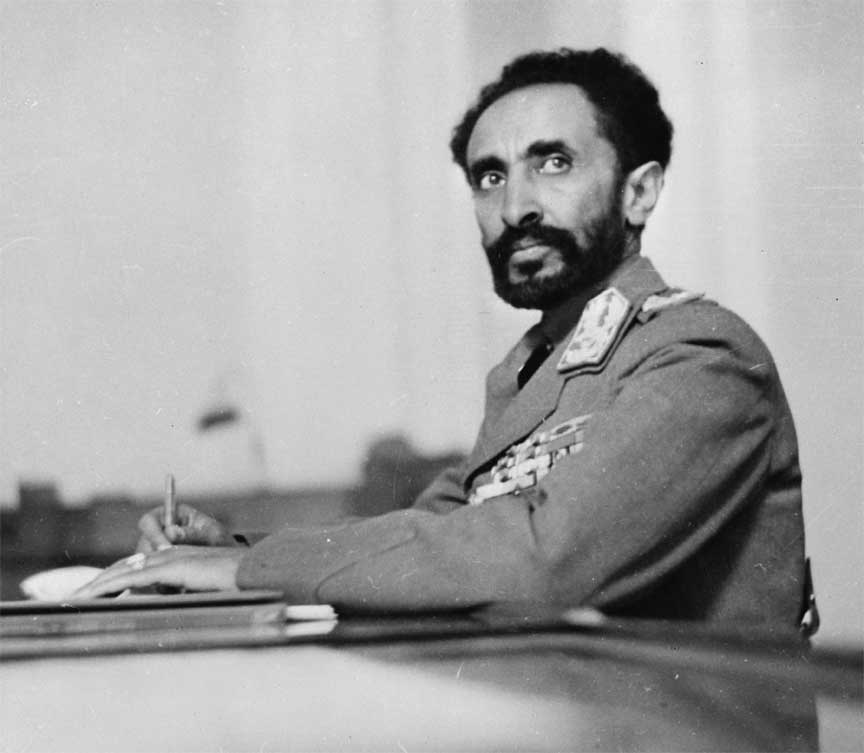
Haile Selassie
On October 3rd, Italy invaded Ethiopia. Although Mussolini gave a number of pretexts for the invasion, the only real reason was Mussolini's nationalist expansionist interest. The Italian advance was initially slow. By Spring 1936, however, the Italians had begun large-scale bombing and to use poison gas. The Ethiopians were quickly vanquished and Addis Ababa was captured on May 5, 1936.
Ethiopia, at the time of the invasion, occupied a unique position in the African continent. Unlike most of its neighbors, it had managed to evade European colonization. Its successful resistance against an earlier Italian invasion attempt at the Battle of Adwa in 1896 was a source of national pride. However, this independent status, combined with Mussolini's hunger for colonial expansion and a desire to avenge Italy's past defeat, made Ethiopia a prime target. Furthermore, Italy's geographical advantage, with its colonies of Eritrea to the north and Italian Somaliland to the east flanking Ethiopia, facilitated the impending invasion. Tensions began escalating with the Walwal incident in 1934, where clashes between Italian and Ethiopian troops occurred. While a relatively minor skirmish, Italy seized upon it as a justification for military aggression, framing themselves as responding to Ethiopian aggression. Emperor Haile Selassie, sensing the impending crisis, appealed to the League of Nations. However, his pleas were met with indifference, showcasing the League's inability to serve its foundational purpose of preventing conflicts. October 3, 1935, marked the beginning of Italy's full-scale invasion. Armed with a modern, well-equipped army of around 500,000 troops, supported by artillery, tanks, and an air force, Italy had a distinct advantage. Ethiopia, although boasting a larger force, was ill-equipped in comparison. As battles raged, Italy's use of mustard gas, in flagrant violation of the 1925 Geneva Protocol, further tilted the scales in their favor, causing significant Ethiopian casualties. Over time, key battlegrounds such as Tembien, Amba Aradam, and Maychew witnessed Italian tactical dominance, owing largely to their superior weaponry. By May 1936, the Italian forces had made their way to Addis Ababa, prompting Emperor Haile Selassie to flee into exile. Mussolini, triumphant, incorporated Ethiopia with Eritrea and Italian Somaliland, proclaiming them part of the Italian East African empire. King Victor Emmanuel III was ceremoniously declared the Emperor of Ethiopia. However, the Ethiopian spirit remained unbroken. Despite the official occupation, many Ethiopians continued their resistance through guerrilla warfare and other acts of defiance against their occupiers. Internationally, the aggression was met with criticism. The League of Nations, in a symbolic move, imposed sanctions on Italy, though these measures were insufficient and lacked the bite to deter Italian ambitions. The tides began to turn with the onset of World War II. The changing global dynamics saw British and Commonwealth forces collaborating with Ethiopian patriots in a campaign against the Italians in East Africa. Their efforts bore fruit, culminating in the expulsion of Italians from Ethiopia. In a moment of poetic justice, 1941 witnessed the return of Emperor Haile Selassie to Addis Ababa, restoring his reign.
 >
>